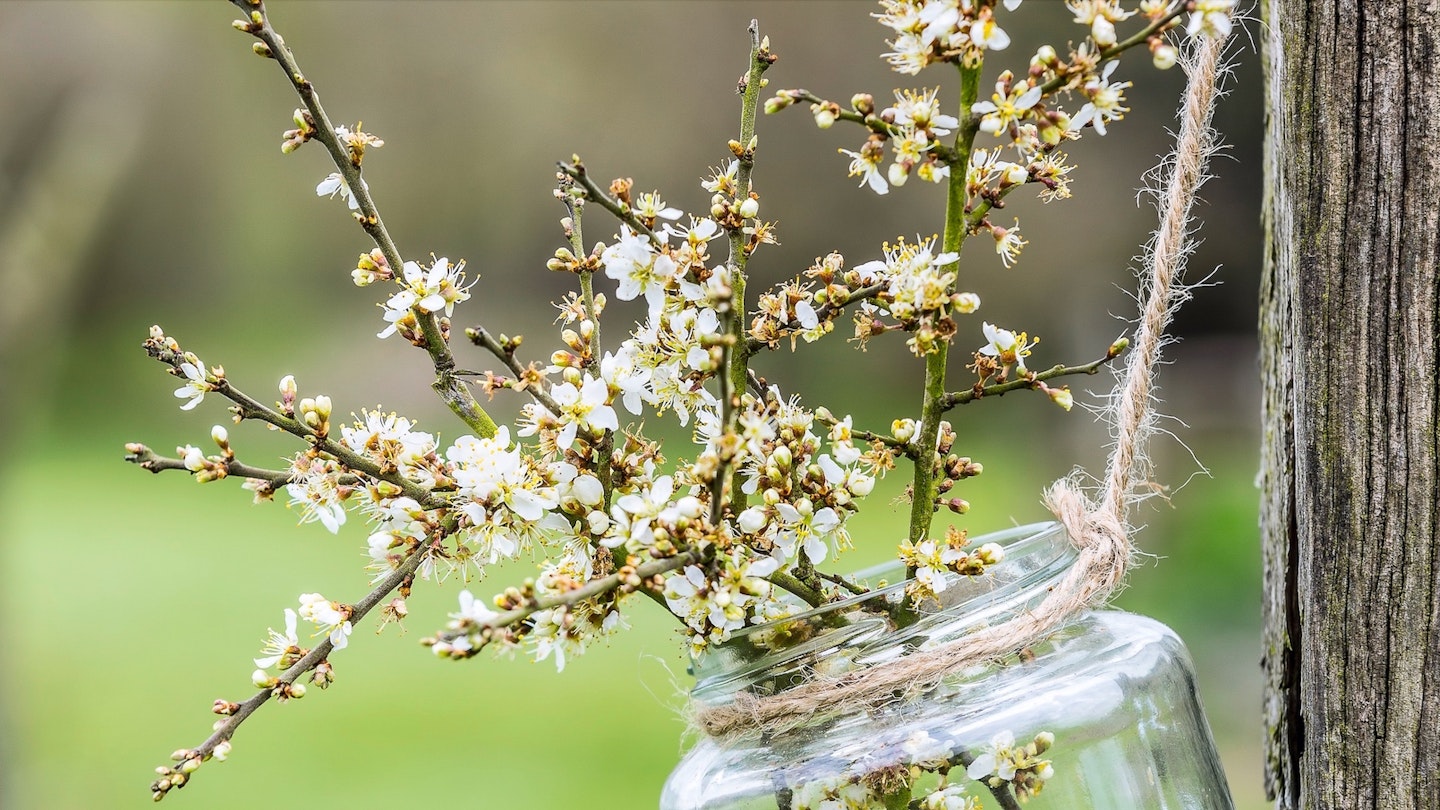Hundreds of tiny white blossoms emerge in spring on the bare, thorny branches of blackthorn, Prunus spinosa. These prolific flowers are a common sight in hedgerows and along field edges, the spiky branches often being used as a natural cattle-proof barrier. As one of the earliest blossoms to appear, the multitudes of flowers provide an important source of pollen for foraging spring bees. Foliage arrives later and is itself a food source for many caterpillars, including those of the Brimstone moth and Brown Hairstreak butterfly. With its dark spiny wood and contrasting bright flowers, blackthorn can be used in a variety of seasonal arrangements to welcome spring.
Inspiration
Pliant strips of blossom are entwined to form a circular wreath. Their angular twigs give the impression of a spinning Catherine wheel when hung from a wooden post.
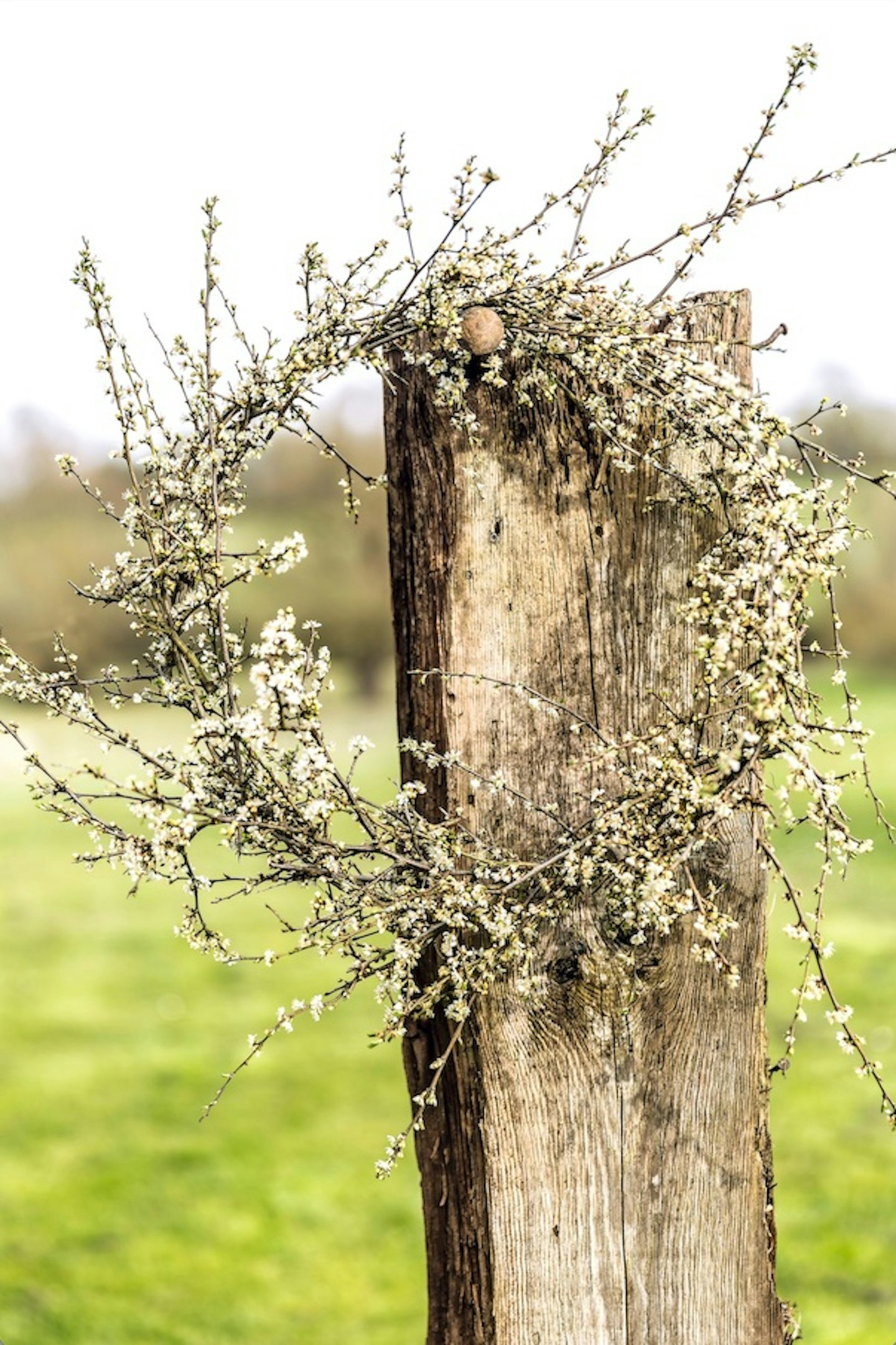
A delicate picture frame effect is created by placing smaller strips of blossom in a rectangular shape, and binding them at each corner.

A weathered metal pail proves a simple but effective container for armfuls of unruly branches.
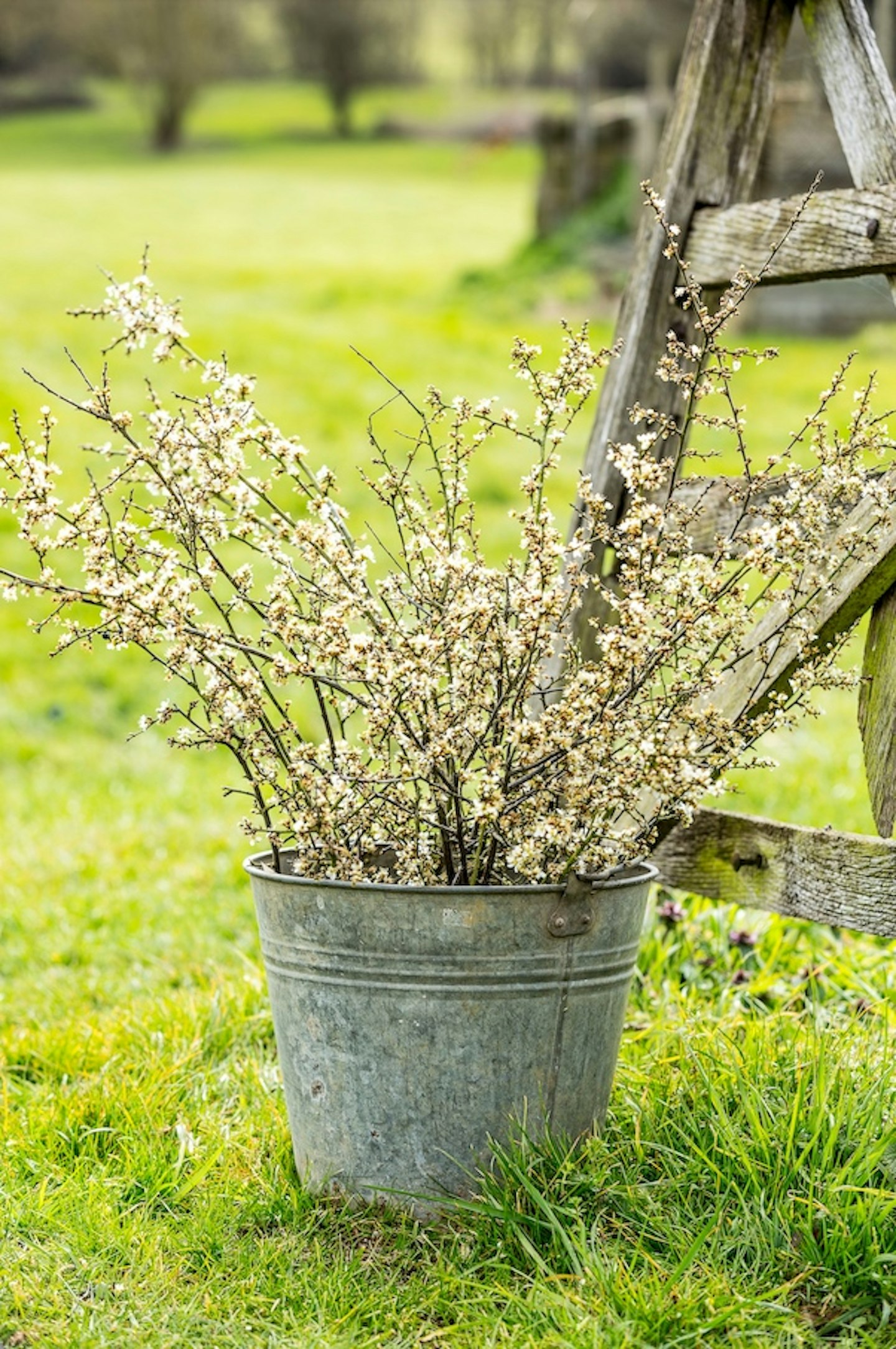
Sharp strips of dark-stemmed blossom create a stark statement when simply placed in a glass bottle.
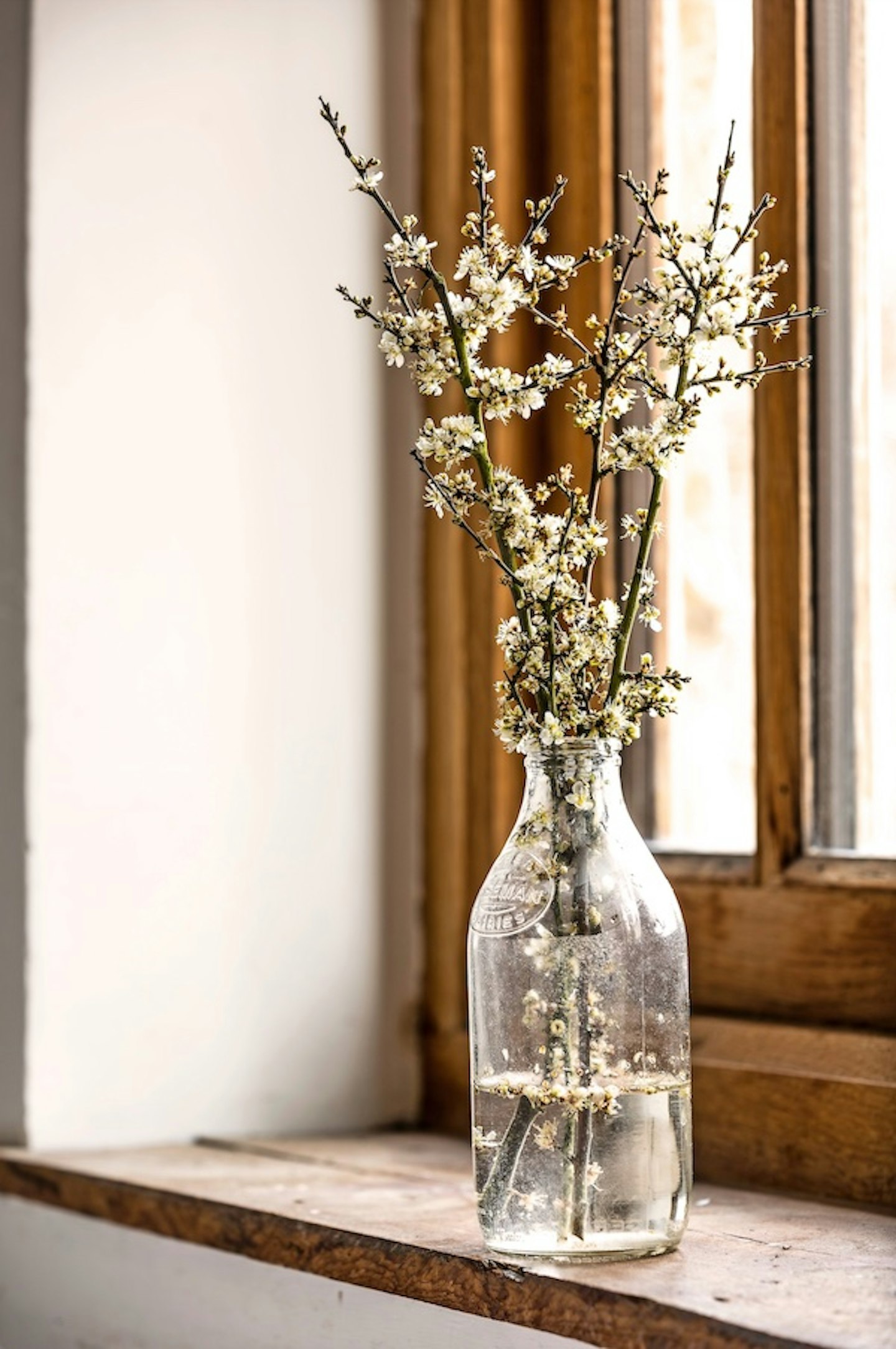
Short, spiky blossom twigs in a jam jar, strung from a fence post, make a rustic decoration.
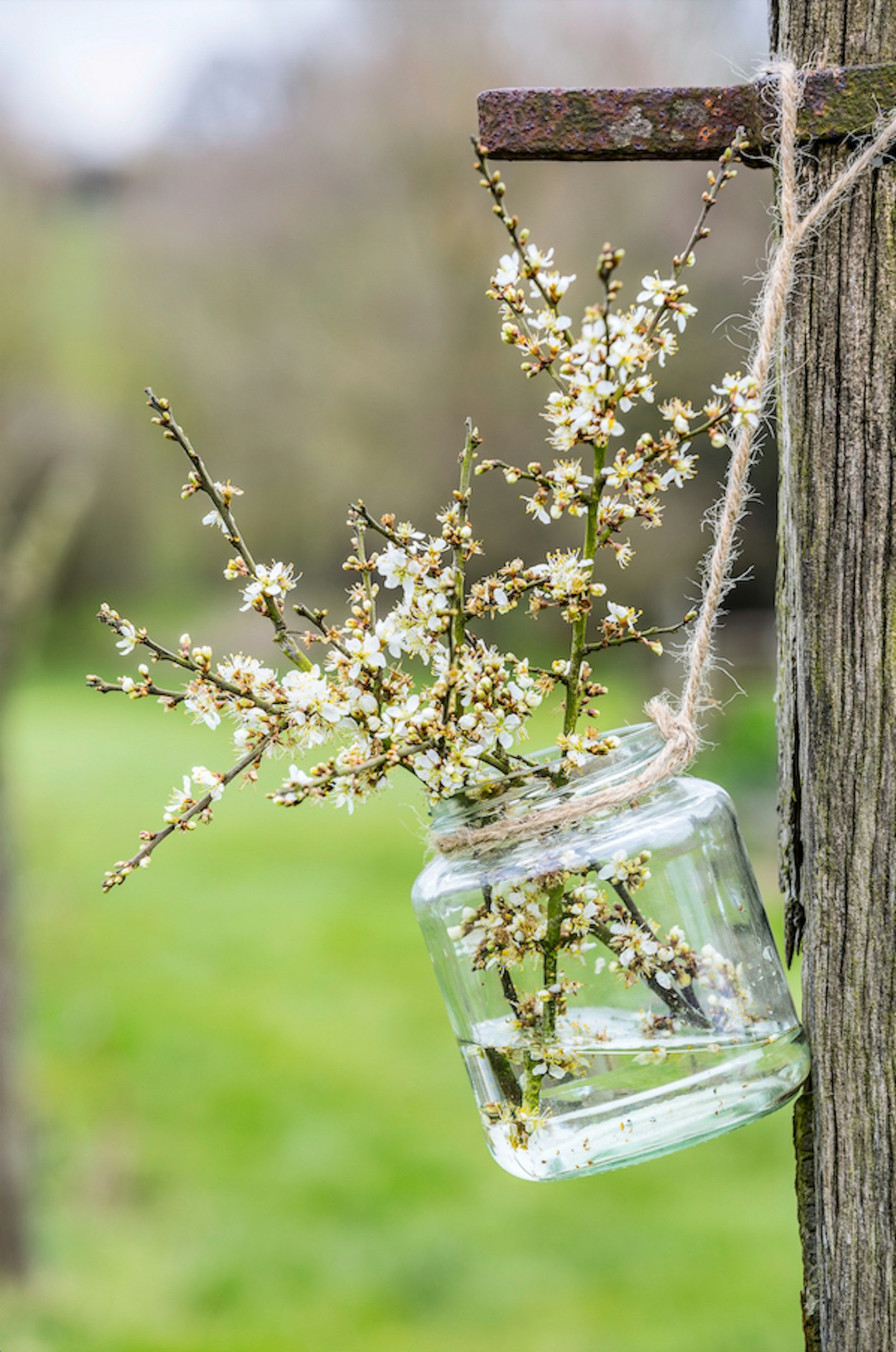
Floating blossom flowerheads, like tiny lilies on a pond, display their inner beauty and vibrant spring colours.
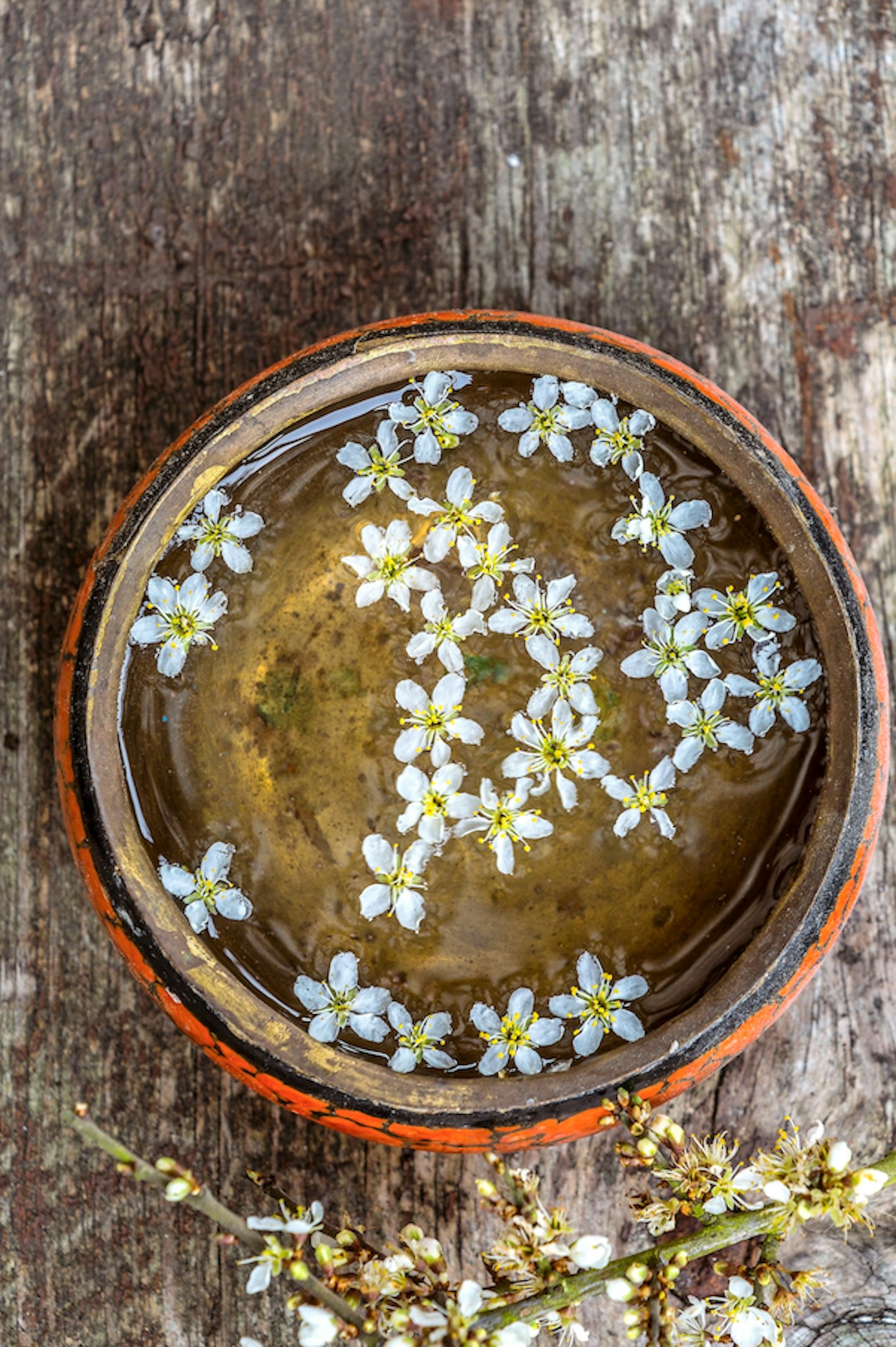
Project: Sue Martin; Photography: Richard Faulks
1.
Subscribe today!
Take out a LandScape subscription
LandScape brings the fresh air of the British countryside into your home. With a mix of beautiful photography and in-depth features, it captures the very best of every season, from stunning landscapes and places to visit to the best of British traditional cookery and crafts. Choose the right Subscription offer for you… Receive 12 issues with free UK delivery to your door with a Print Subscription. Get easy access to the digital issues, Member-only rewards and more by taking out a Digital Subscription or choose a Print + Digital Subscription and get everything included.
